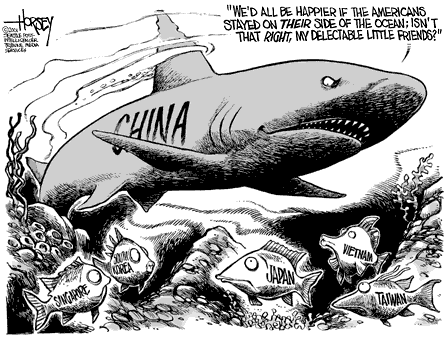Free trade and its perceived advantages
 Free trade can be defined as “a policy by which a government does not discriminate against imports or interfere with exports by applying tariffs (to imports) or subsidies (to exports)” (Britannica, 2014, online). In simple terms, free trade can be explained as an absence of government intervention to the practices of selling to and buying from another country.
Free trade can be defined as “a policy by which a government does not discriminate against imports or interfere with exports by applying tariffs (to imports) or subsidies (to exports)” (Britannica, 2014, online). In simple terms, free trade can be explained as an absence of government intervention to the practices of selling to and buying from another country.
Promoted by famous economist Adam Smith and David Ricardo, perceived advantages of free trade include benefits to be gained from specialisation practices engaged by countries according to their competitive advantages. This benefit based on theoretical frameworks of absolute advantage and comparative advantage.
Specifically, according to the theory of absolute advantage proposed by Smith (1976), countries are perceived to have absolute advantage in producing a product if the production is facilitated in the most efficient way than other countries. Comparative advantage proposed by Ricardo (1817), on the other hand, refers to “the ability to produce a specific product more efficiently than any other product” (Pride et al., 2011, p.70).
According to theories of absolute advantage and comparative advantage focus on manufacturing products that can be produced more efficiently than other countries and trading these products for other products with different countries generates more economic gain and value compared to attempts to diversify production within a single country.
A basic classical example of trade of two products between two countries found in the most economics textbooks illustrate the advantage of free trade in the most effective manner.
Moreover, free trade encourages competition in the market, motivating local producers to find and utilise sources for competitive edge on a constant basis, and high level of competition in the market offers benefits to consumers in terms of more variety of products and services, higher quality, and competitive prices.
Another advantage of free trade can be specified as to the levels of efficiency and innovations within a country (Schumacher, 2012). To be more specific, free trade facilitates the shift of resources to more productive industries within a national economy, and developments within the industry can increase the levels of further investments, ultimately resulting in innovations and development of industry infrastructure.
Promotion of fairness in business conduct can be mentioned as an additional advantage associated with free trade. In other words, the absence of protectionism of local producers through tariffs reduces the chances of cronyism amongst local producers due to the necessity to remain effective and competitive, thus higher levels of fairness in relation to human resource aspect of the business is going to be ensured.
References
Free Trade (2013) Britannica, Available at: http://www.britannica.com/EBchecked/topic/218403/free-trade
Pride, W.M., Hughes, R.J. & Kapoor, J.R. (2011) “Foundations of Business” 3rd edition, Cengage Learning
Schumacher, R. (2012) “Free Trade and Absolute and Comparative Advantage: A Critical Comparison of Two Major Theories of International Trade” Universitatsverlag Potsdam
